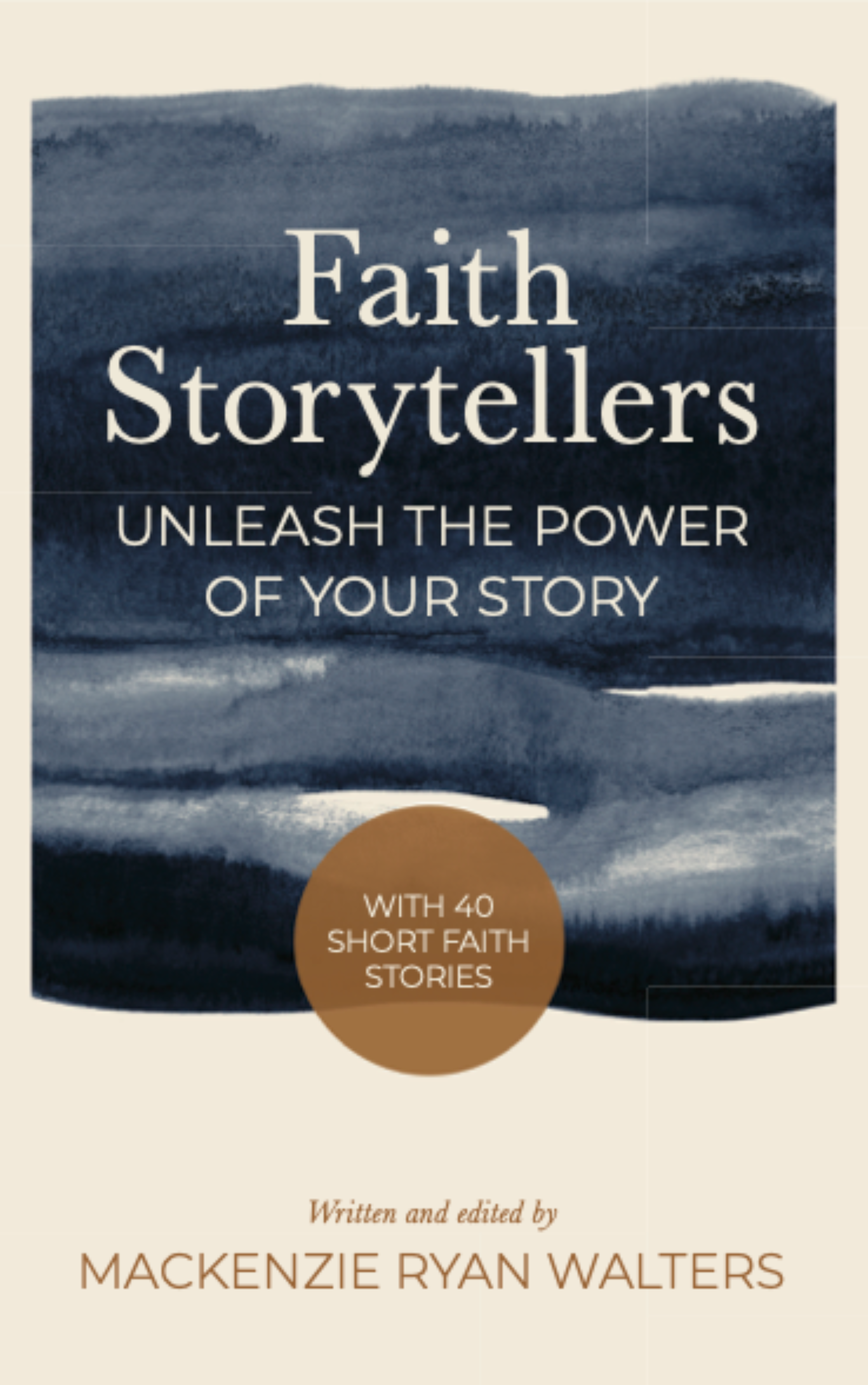How to write a testimony with the Faith Storytellers Framework
At Faith Storytellers, we understand how challenging it can be to have a personal story to share but be unsure how to write a testimony. That’s why we teach a Christian writing process that can be used to crafting your testimony, a personal faith story, or used in other forms of storytelling.
Before you write your faith story:
Read a few testimony examples on our website. We regularly share personal faith stories.
How to write your Christian testimony using the Faith Storytellers Framework
Our Faith Storytellers Framework allows you to craft your personal testimony story in a way that encourages readers or listeners to "lean in" and learn more.
Our approach is based on the narrative structure you find in the Bible and which most modern books, movies, and plays replicate: The three act structure.
Act I: Beginning that shares the “before” experience (Before Jesus).
Act II: A middle with change that alters the main character’s world view (Jesus comes and people who encounter him must decide whether to believe Jesus is the Messiah).
Act III: An ending with a resolution, often the opposite of the beginning (Jesus is resurrected and believers become followers).
Personal faith statement. At the very end of your story, end with a personal belief. Try finishing this sentence: “What I know to be true about God that I didn’t before is …”
It’s one thing to learn about how to write a testimony for church, it’s another to read testimony examples to see how our story structure is applied. Read through a few of our faith stories or search by topic before you begin.
Step 1: Pray about which story to tell
Reflect on what true, first-person story to share about your faith. This is a story about your personal relationship with God and how it’s changed or grown during a specific time in your life.
Your story does not have to be about your life's deepest, darkest moment. We’ve had storytellers say they wanted to write one story. After praying through it, God led them to tell a different story instead.
Step 2: Outline your three scenes. Each scene is a specific moment in your life.
Now it’s time to briefly outline your story. Create three sections or scenes. These scenes should be chronological, although the timeline may vary.
For example, you may start the first scene when you’re 12 or 25, the second scene when you’re 26, and the last scene when you’re 57.
It can be helpful to add a subhead above each section:
Scene 1 Subhead
Beginning (typically the opposite of your ending)
Scene 2 Subhead
Middle where something changes
Scene 3 Subhead
Ending that brings resolution and shares a personal statement about your faith (“What I know to be true about God that I didn’t before …”)
You’ll refine your faith statement (your ending). For now, make sure it reflects the story you’re telling in all three scenes.
For example, if your story is about God’s comfort during grief, one of the three scenes should focus on a moment when you were experiencing loss. Your story doesn’t have to be dark, but we want it to be deep.
Step 3: Create a narrative sequence in each scene by adding action and reaction
Each scene will open with a brief description of where you were (location) and when the scene occurred (age, decade, year, etc.) Like a movie that briefly flashes an image of the scene before jumping to the action, you're opening description allows your readers to quickly understand the context needed to immerse themselves into your story fully
Next, you'll have the scene's action, which is the bulk of what happened that makes this scene so moving and memorable. Because this is a short story (not a memoir or movie!), you’ll “zoom in” on the action scene.
Each scene will also end with your reaction, which is how you felt about what happened in the scene. Describe and name your emotions (which goes against conventional writing wisdom, but in the storytelling form we teach, it works because it helps an audience quickly identify and empathize with your feelings. The point of Faith Storytellers is connection.)
It will look something like this:
Scene 1: Beginning (opposite of ending)
Weave in description of where you are (time and place)
Action (what happened)
Reaction (how you felt about what happened, name your emotion)
Scene 2: Middle with change
Weave in description of where you are (time and place)
Action (what happened)
Reaction (how you felt about what happened)
Scene 3 Middle with change
Weave in description of where you are (time and place)
Action (what happened)
Reaction (how you felt about what happened)
Personal faith statement.
Try finishing this sentence: “What I know to be true about God that I didn’t before is …”
Step 4: Pray through your story. Ask God to reveal details about where he was or how he loved you during your story.
Now, you’ll revise even more. Did you know that writing is really about revising? That’s the secret!
You keep revising, adding or cutting, whittling or building, until all the pieces are aligned and all the words are in the best order. (If you haven't taken our quiz on which natural storytelling style you have, do so now!)
At this stage, pray through your story and ask God humbly to show you where he was in each of your scenes. Ask him: Where were you? How did you reveal himself to? How did you wrestle with God?
Allow yourself to be vulnerable in describing how your relationship with God grew or changed over time. We’re human, we’re imperfect, yet when we are weak, God is strong.
Work these insights into your story. Don’t state how he worked (don’t say, “God did this.”) Instead, describe meaningful moments that reflected God’s movement.
In the Faith Storytellers book, we discuss how God is like the wind: You can’t see him, but based on the evidence of how the grass sways or how a calm settles in after a storm, you can see that he is there.
Step 5: Prepare your faith story to share
The final step is to prepare your story to share. In our experience, the best writing is about revision and the best speaking is about practice. That’s why we encourage you to continue to polish your story independently and with a trusted friend or loved one.
If you’re writing your story:
Read it slowly out loud to yourself. You’ll catch things you want to improve that you didn’t see when you read it silently.
Send it to a friend and ask them to share things that resonated with them about your story as well as things that were unclear. It’s important to share the specific type of feedback you want!
Check speller, grammar, and your publishers’ writing style. Every publisher uses a different style. At Faith Storytellers, we use this one.
If you’re speaking your story:
Practice saying your story out loud from memory if you plan to speak it (you don’t have to memorize it word-for-word, just the main points).
Practice speaking your story from memory in front of a friend. Ask them to share things that resonated with them about your story as well as things that were unclear. It’s important to share the specific type of feedback you want!

